
A House For A Horse—Michael O’Shea & Virginia Mayo
Michael O’Shea’s first proposal to Virginia Mayo took place in 1943 when they were working together in a film called Jack London.
Mike didn’t know Virginia very well, but one afternoon he spotted her alone in a secluded corner of the set. He tiptoed up behind her, kissed her lightly, and said, “Let’s get married.”
Virginia whirled around. “You’re pretty fresh,” she snapped indignantly. Then she got up and stalked off.
Mike didn’t give up. Five years later he proposed again. Only this time he knew Virginia better and he had more to offer.
“I’ve got a nice little ranch house in Van Nuys,” he began cautiously. “In fact, I had you in mind when I bought it. If you’ll take me along with the house, I promise I’ll make you happy.”
The O’Sheas had been married a week ft! before Mike summoned enough courage to confess the truth about his “little ranch house.”
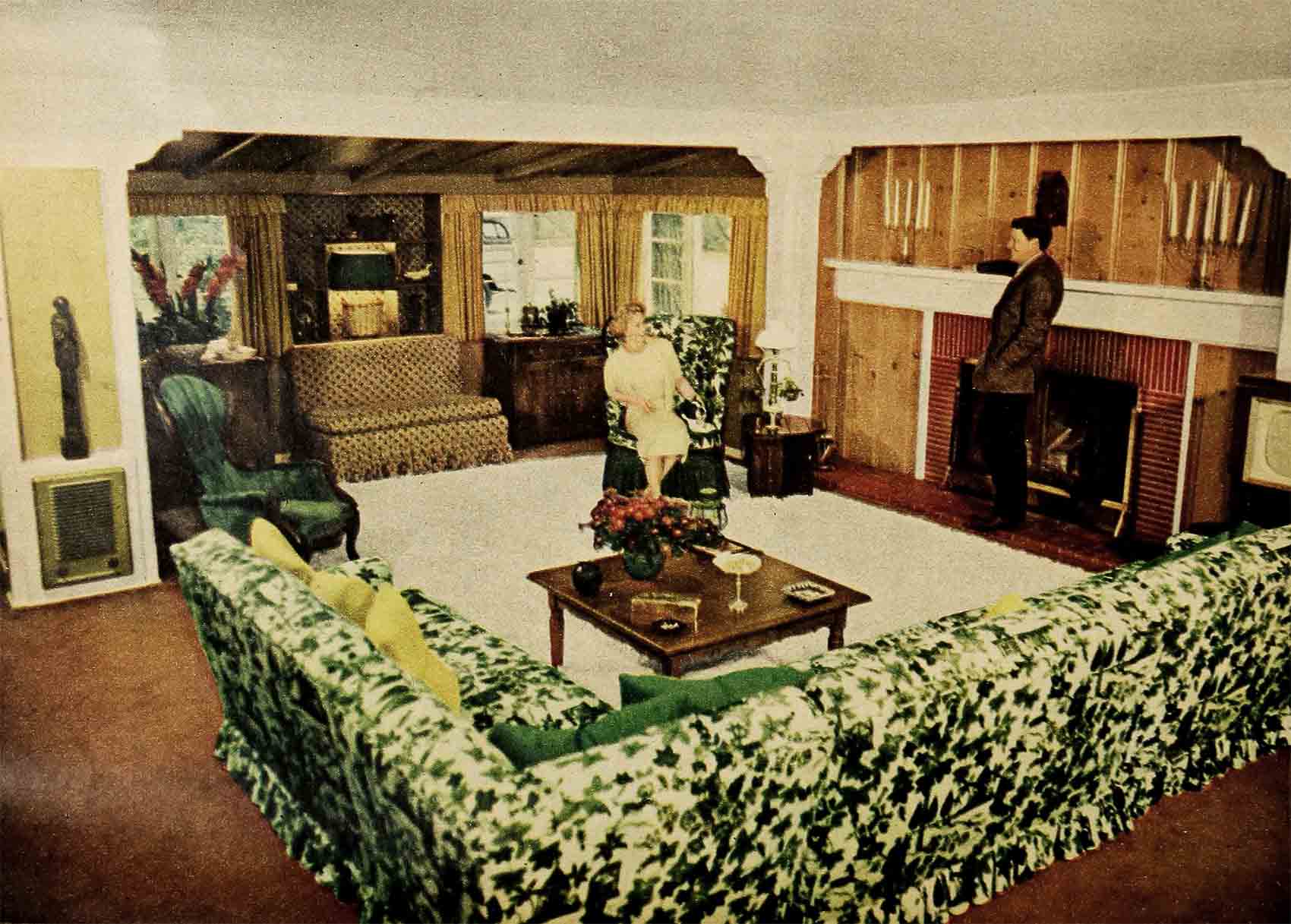
“I really didn’t have you in mind when I bought this house,” he said to Virginia, “or it would’ve been much different. I actually bought it for a horse.”
“You bought it for what?” Virginia asked.
“My quarter horse,” Mike said, painfully. “You see, the fellow who was boarding him suddenly sold his ranch and my horse had no place to stay. I was living in a Hollywood apartment and I couldn’t keep him there, so one Sunday I drove to the San Fernando Valley and bought a house.”
Virginia shook her lovely blonde head. “I can’t believe it.”
“It’s on the level,” Mike continued. “And after the deal was set, the people I bought it from told me that the house was 20 years old and not very well-built at that. Can you forgive a dumb guy who loves you?”
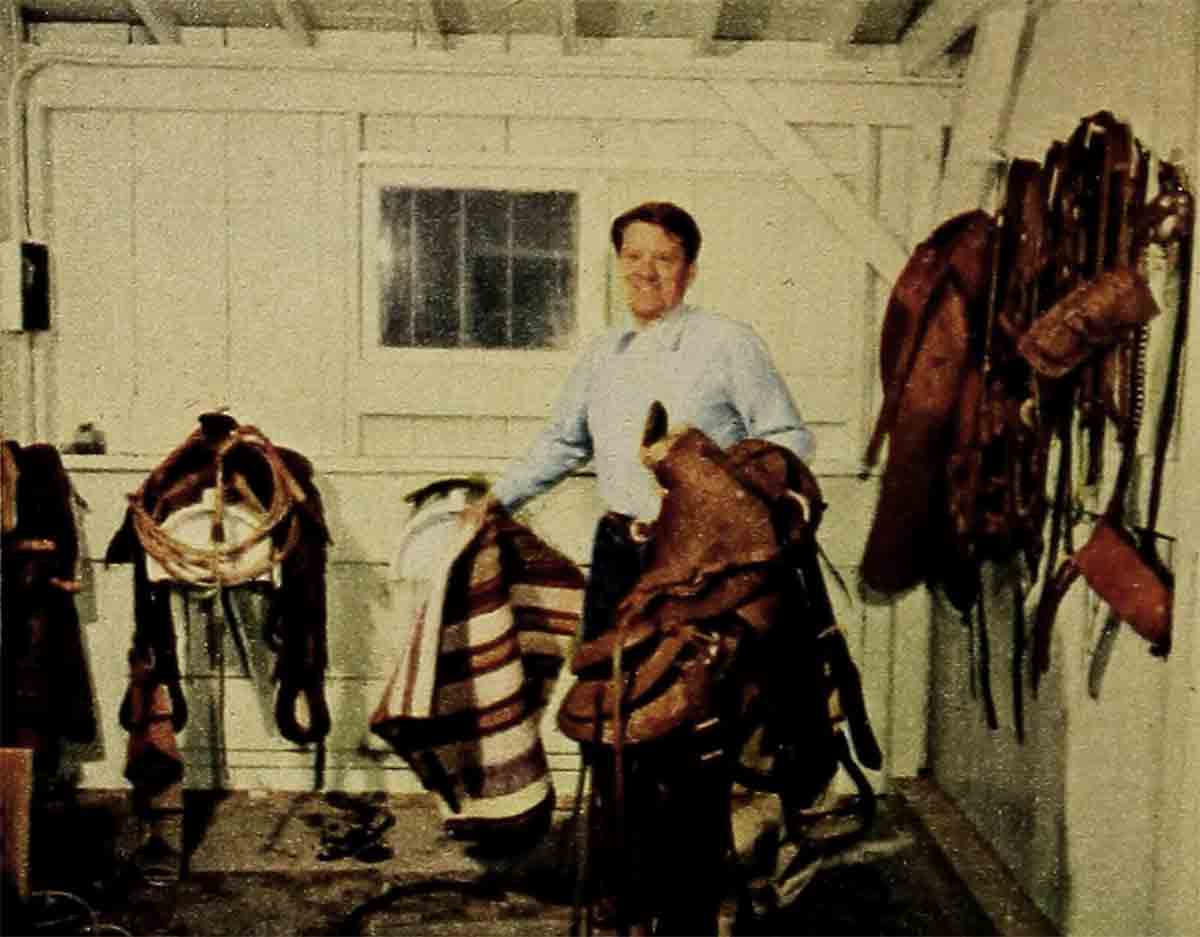
“Darling,” Virginia whispered reassuringly. “Don’t worry. We’ll fix the place up.”
Four years have elapsed since that day, and any resemblance between the house as it was and the present place is simply an oversight on Virginia’s part.
Time, a woman’s determination, and money have changed the ramshackle building into one of the most unusual and inviting homes in Hollywood.
At first, Virginia and Mike didn’t make any startling changes, largely because they lacked the do-re-mi. Virginia ran up a set of dining room curtains; Mike repainted the kitchen and built a brick patio facing the paddock. They made the rounds of the local travel agencies and gathered a wide assortment of pesters.
“I picked up the trick of using gay posters to liven drab rooms when I was working for Billy Rose at the Diamond Horseshoe in New York,” Virginia explains. “I used to room with other show girls in pretty miserable apartments. No matter how bad they looked we’d get some travel posters, tack them up, and the apartments would come to life.”
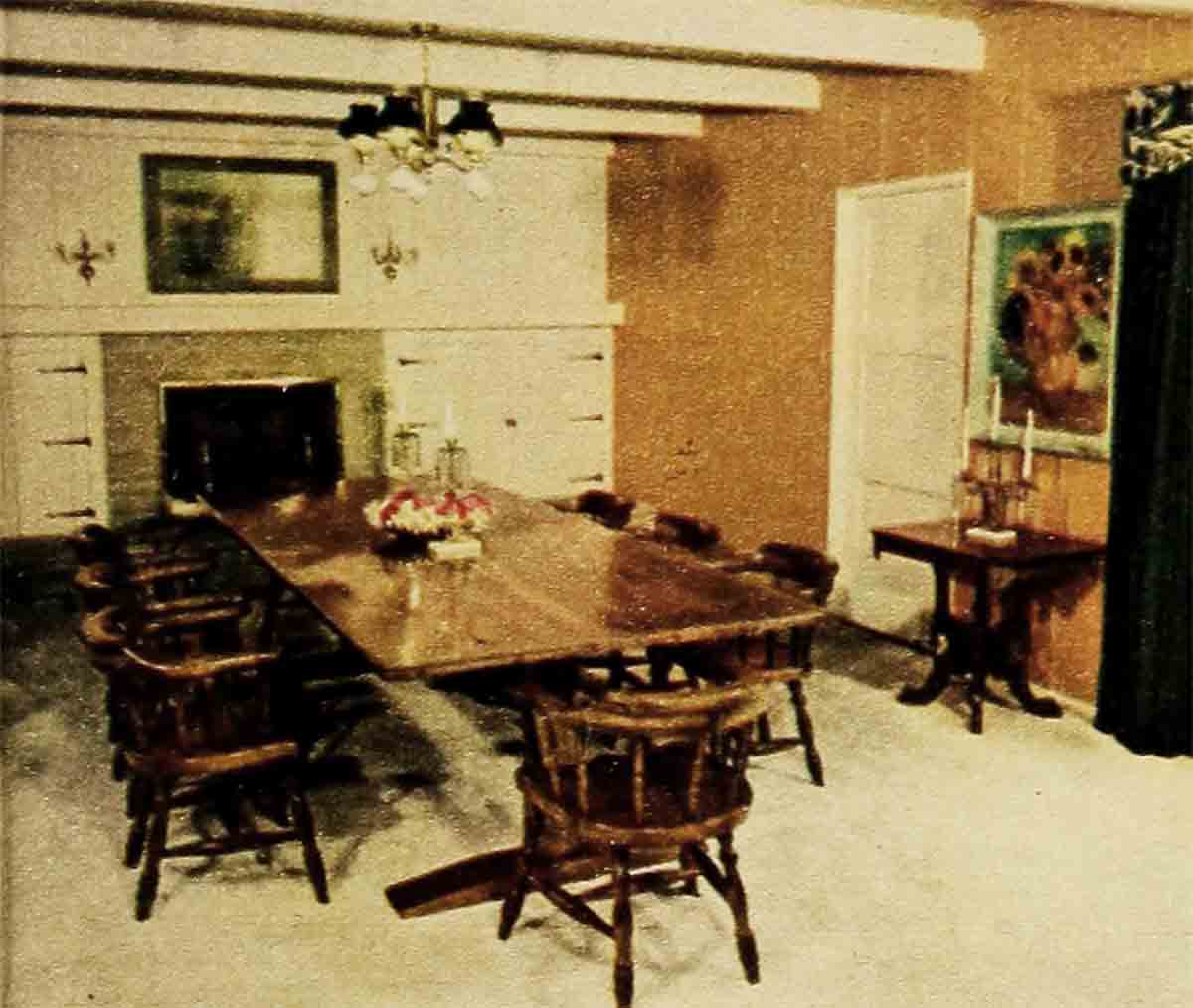
Besides collecting poster art, the O’Sheas bought the sort of furnishings that give a home character. When Mike was on location in Mexico, he picked up some beautifully carved figurines. On another trip he bought a magnificent wooden Iroquois head that now occupies a prominent position on the mantle. He also purchased a statuette of St. Jude by the great Mexican sculptor, Magyana.
While Mike was finding objets d’art, Virginia was using her spare time to poke around local antique shops. Once she came home with a cranberry-glass kerosene lamp that she converted into a kitchen lighting fixture, and gradually she acquired some marble-topped night stands, a few odd tables, and a quaint old desk.
When they visited friends who were full-time ranchers, the O’Sheas noticed that their homes were equipped with Navajo rugs. Sometimes the rugs were hung as tapestries, or else they were scattered on the floor. In a few places little rugs were used as table mats.
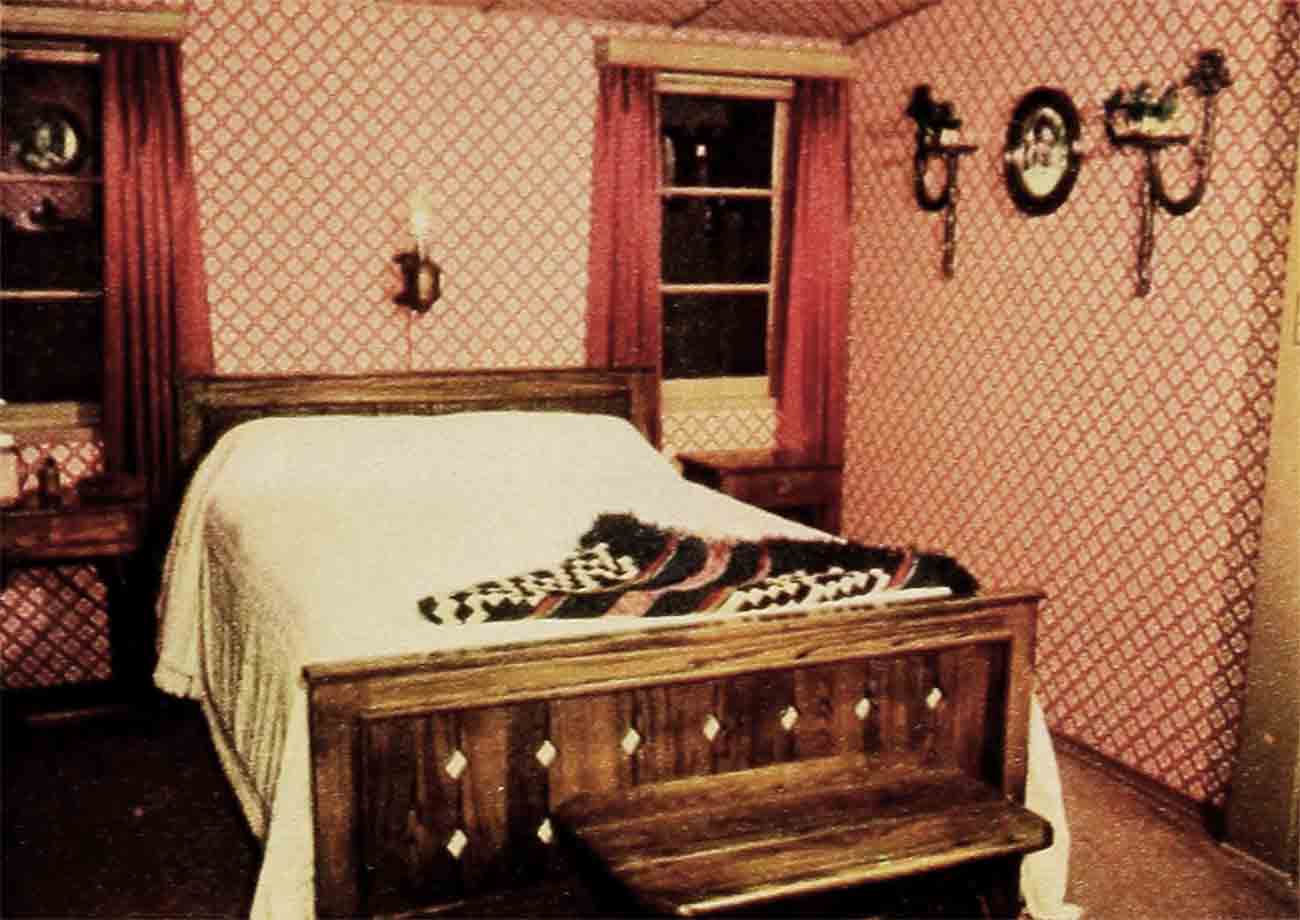
When Virginia asked about the Indian handicraft, she was told that Navajo rugs are not only decorative but are supposed to be lucky as well. The Indian weavers deliberately leave a little hole in each rug so that the evil spirit can escape.
Just about the time when Virginia was won over by Navajo rugs, she and Mike discovered Van Gogh.
The O’Sheas were in Chicago en route to New York when they fell in love with Van Gogh’s paintings. The studio representative who met them at the train wanted to take them to the Pump Room at the Ambassador Hotel, but Virginia objected.
“The Pump Room is wonderful,” she said tactfully, “but we’d rather skip it and take in the show at the Art Institute.”
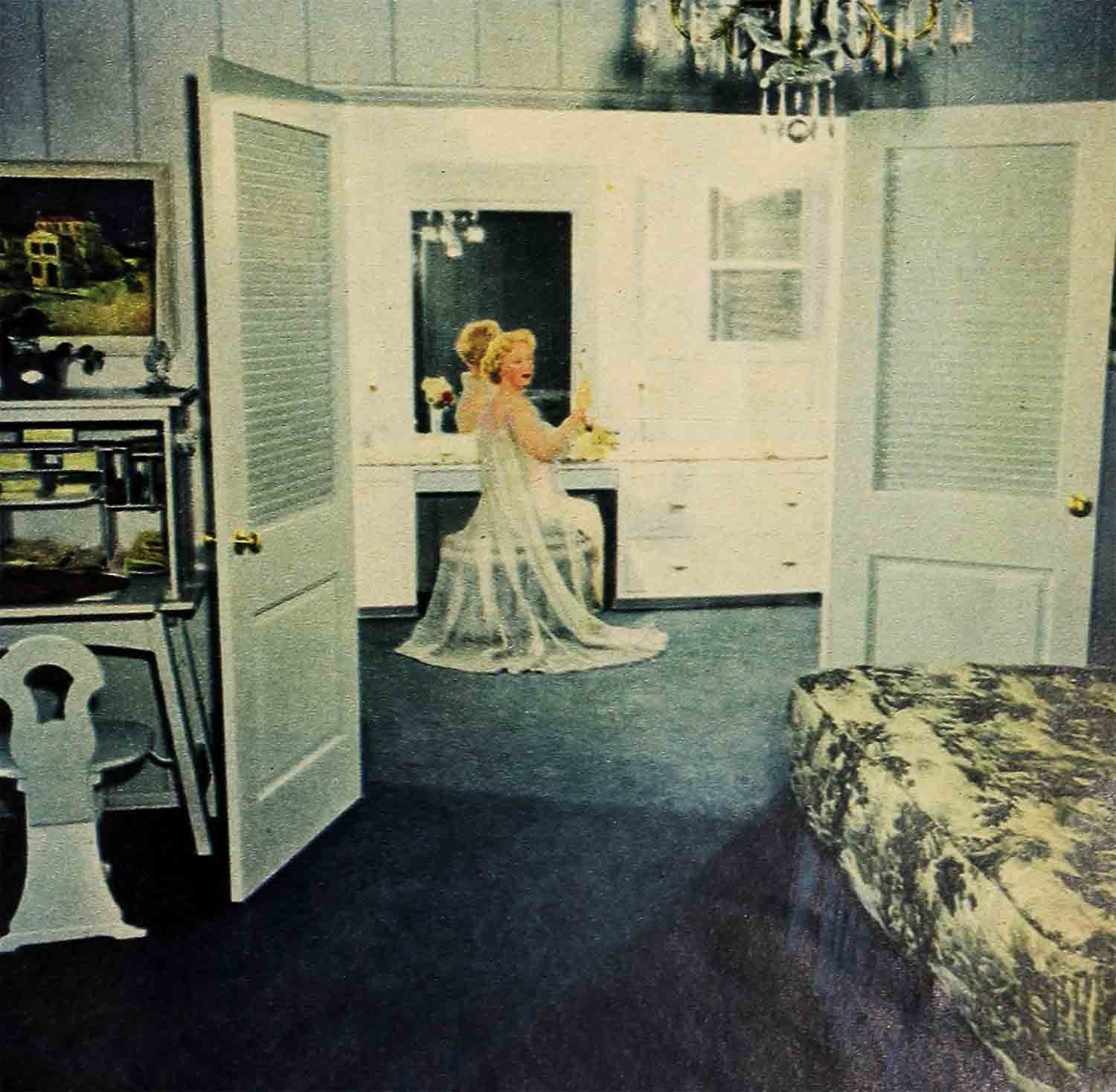
Admittedly, Virginia Mayo does not look like a girl who prefers the Art Institute to the Pump Room, and the Warner Brothers representative was amazed, but like a good fellow he said nothing and drove the O’Sheas to Michigan Avenue.
In Virginia’s own words, “The Van Gogh paintings hit us like dynamite. The canvases were so vivid and exciting that Mike and I were speechless. We walked through the exhibition twice before we could express our feelings. Finally, we decided to buy a couple of reproductions. We settled on a print of a sun-drenched wheat field and a moody blue still-life.
“By the time we got through buying the prints, we were really in danger of missing our train to New York, so we grabbed our pictures and ran out of the Institute. People turned and stared as if we were robbers.”
With the Van Gogh reproductions as inspiration Virginia decided that it was just about time to remodel the house Mike had originally bought for his horse.
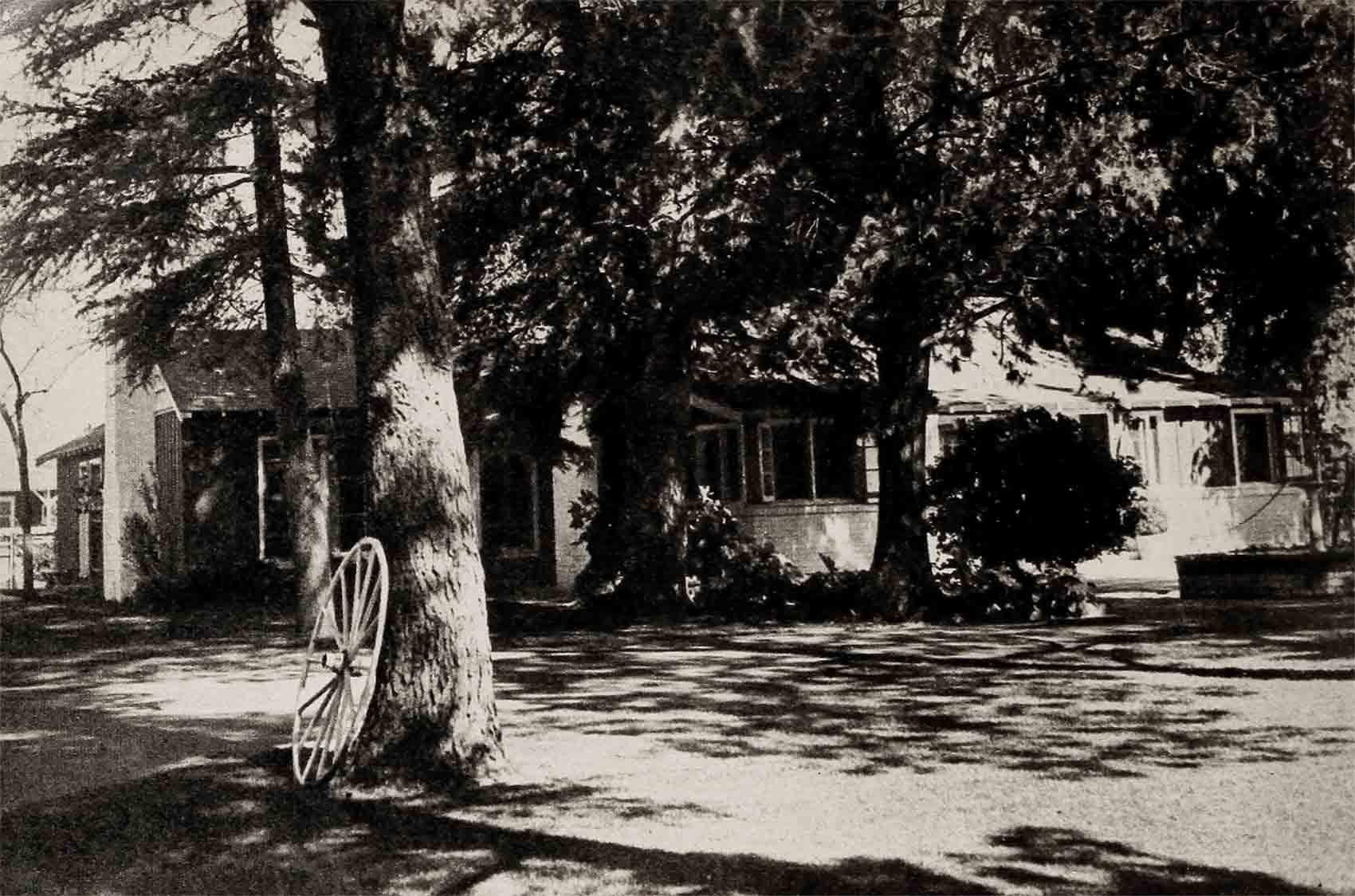
So they knocked out halls, pushed back walls, made one large, beamed living room. They panelled the dining room, added a fireplace, gave Mike a new set of personally planned closets, and added a kitchen that has every conceivable appliance—a garbage disposal and dishwasher, a ventilator fan over the stove which keeps the room free of cooking odors, a large freezer and refrigerator, and every gadget from Mixmaster to Toastmaster.
For herself, Virginia ordered a large dressing room and bath as an addition to her bedroom. The dressing room is separated from the bedroom by louvred doors which can be closed when she’s dressing or when she wants to hide her sewing clutter. Virginia’s sewing machine is one of her proudest possessions and stands in a corner of the room near her mirrored and marbled dressing table.
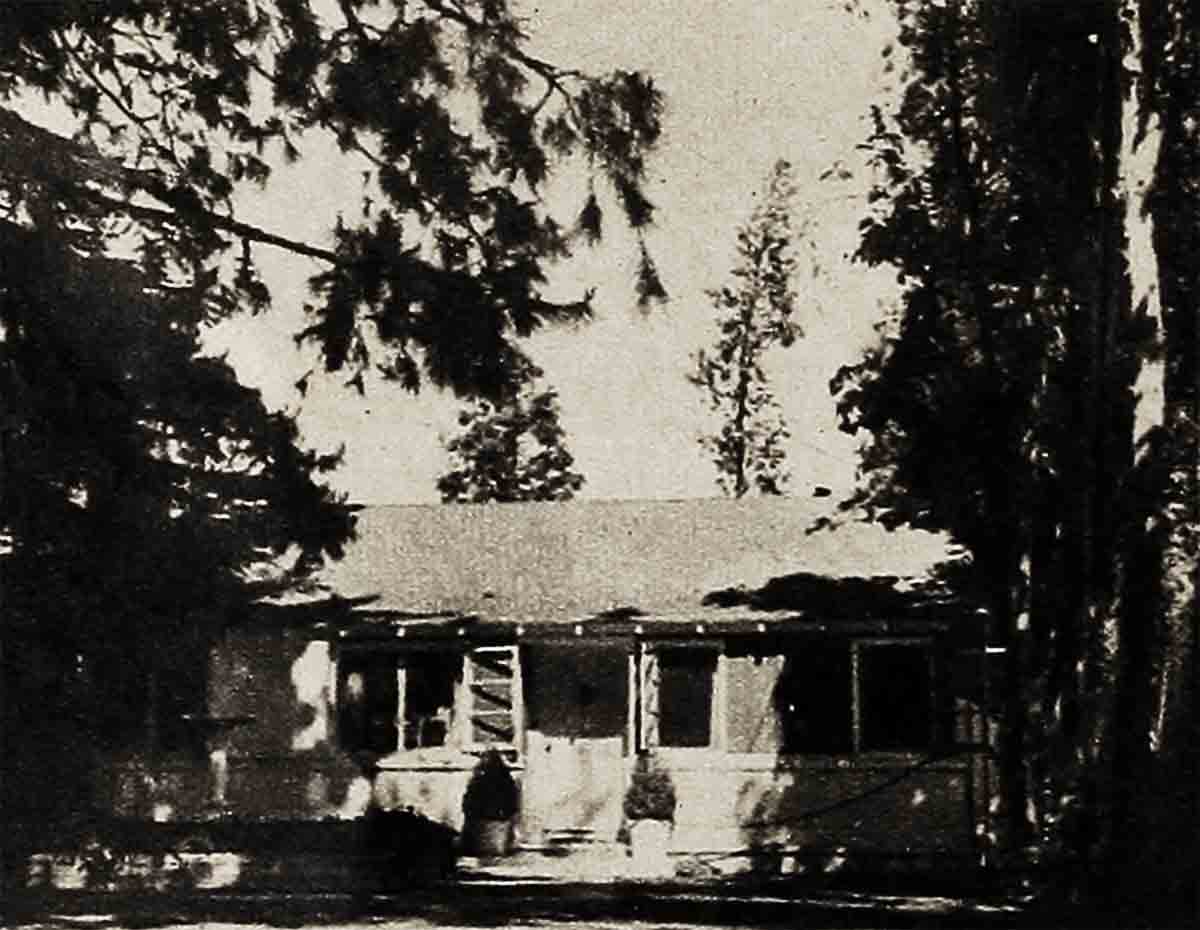
Many of the large architectural changes in the O’Shea house were made while Virginia was abroad working in Captain Horatio Hornblower. She spent her time away from the camera working out decoration plans to put into action later.
A week after she returned to Hollywood, Virginia had her living room walls painted chocolate brown to match the chocolate carpet. She left the beamed ceiling white and ordered an over-scale, three-piece sectional couch so large that she, Mike, and Duke, her Boston terrier, can stretch out full length without being crowded. The couch is in a direct vision line with the television set.
The large, comfortable living room is well-stocked with books and records. And on one wall there is a larger-than-life painting of Virginia. It shows her as Lady Barbara, the character she played in the Hornblower picture, and it was given to her by the studio as a token of gratitude.
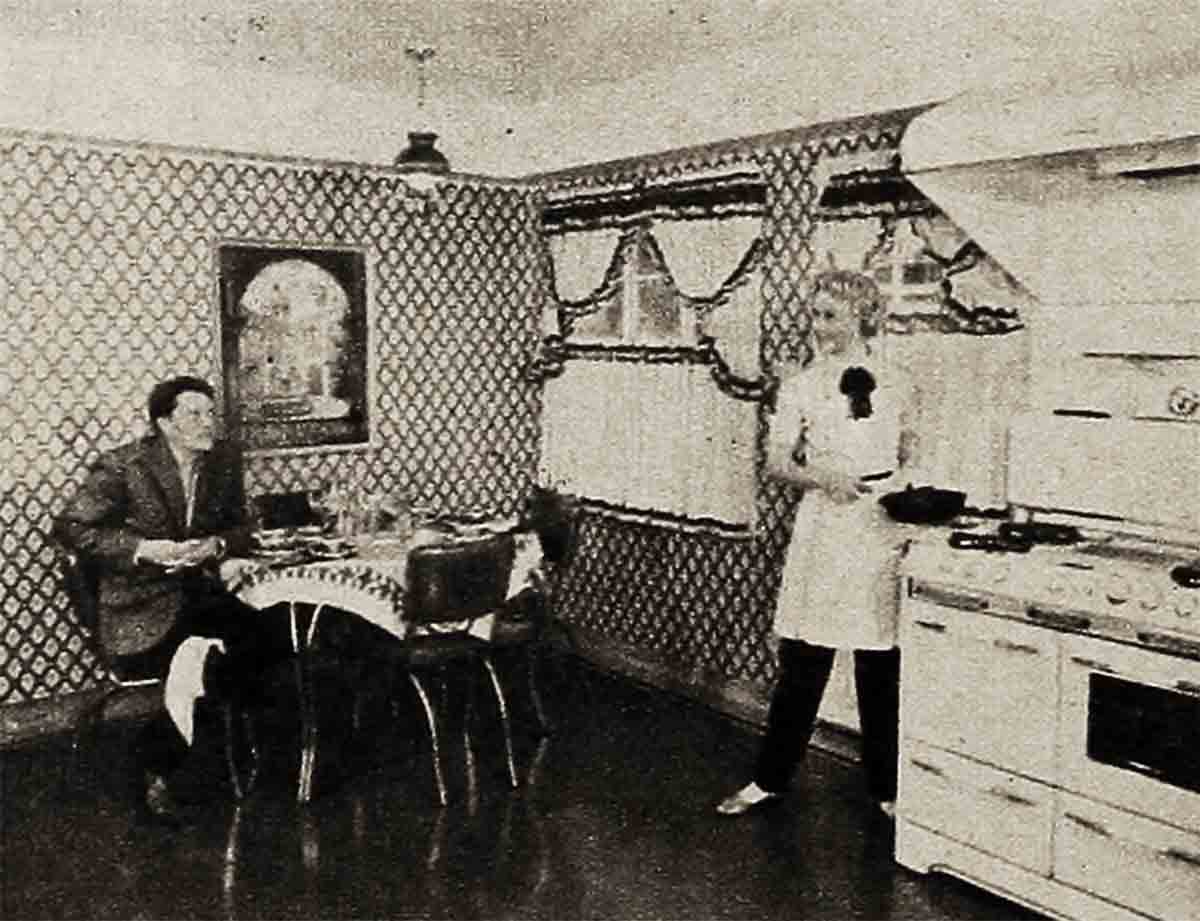
If you ask Virginia where she acquire her furniture she will tell you candidly that she bought the new pieces at Barker Brothers, Los Angeles’ big furniutre store.
“I’m not a trained decorator,” she admits, “and I didn’t know how my decorating ideas would work out. The safest way to test them was to buy furniture through a large store and have it sent home. The pieces that didn’t fit were returned. Those that did, stayed. You can’t engage in that sort of practice with custom-made pieces.”
Virginia’s own room is furnished very simply. The draperies originally hung in the old dining room. Except for a double bed and some table lamps, the only other pieces in the room are an easy chair and a small desk.
Mike’s room is about as Western as you can get without being in a saddle. Virginia decorated it while Mike was on location in Arizona. She filled it with heavy oak furniture, Navajo rugs, and red wall paper. When Mike returned home, his wife had him close his eyes and guided him into the room. He took one long hard look, then grabbed Virginia and kissed her. “The boy from Brooklyn,” he said, “always wanted to be a cowboy.” Which is why Virginia always smiles when she says, “Mike proposed and won me with a house he bought for a horse!”
THE END
—BY MARVA PETERSON
(Michael O’Shea can be seen in 20th Century-Fox’s The Model And The Marriage Broker. Virginia Mayo will soon appear in Warner’s She’s Working Her Way Through College—Ed.)
It is a quote. MODERN SCREEN MAGAZINE MAY 1952




